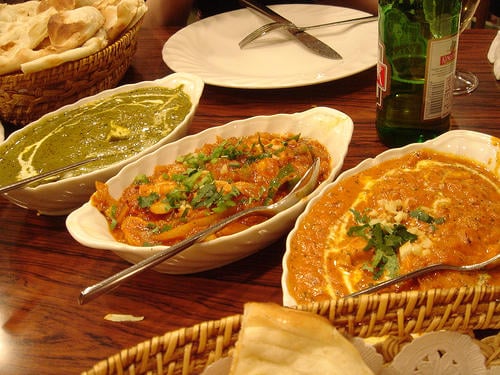The cuisine of India is a certain philosophy and an important part of the cultural heritage of the Indian people. It is impossible to convey in words all the flavors and colors of various and exquisite dishes. It is this indescribable array of gustatory intricacies that attracts the attention of gourmets from all over the world. A large selection of spices, specific recipe ingredients, unusual, amazing imaginative ingredients – that’s what makes Indian cuisine the third most popular among connoisseurs of taste.

The traditional cuisine of India may not be so familiar to us, but it is still unique and remarkable in its own way.
Balance and taste are the basis of Indian cuisine
Indian culture is built on art and philosophy. Therefore, cooking in the country is a full reflection of ideas about proper nutrition, generously flavored with instructions from the Vedas – the main religious laws of India. As follows from the Vedas, all the main dishes are conventionally divided into three categories, which correspond to the three material incarnations of nature – ignorance, passion and goodness. At the Best Indian restaurant in bendigo you can have the best deals now.
The lowest category – ignorance, includes incredibly acute, overcooked, too hot or, conversely, too cold food.
The dishes of passion are recipes full of aphrodisiacs and sharp, stupefying spices. Goodness also opens up to us dishes in which there are no excesses. In them everything is equal and harmonious – there is no sharpness and sensation of salinity, their temperature is acceptable, and oil is added only in order to emphasize the taste.
According to the canons of Vedic cooking – it is the food of goodness that is the golden mean, that is, the right and karmically balanced food.
Tasty and healthy food is a kind of brick in the clutch of the country’s social traditions
Indian people refer to the adoption of food as a sacred process, so for them breakfast, lunch and dinner is not just a daily calorie intake ritual. Indian cuisine is as versatile as the climate and geography of the eastern country. Each of more than 3000 castes has its own view on nutrition and establishes its own food traditions within its own circle. But only two main religions – Islam and Hinduism, left their indelible imprint on the rules and recipes for culinary preferences of the indigenous population.
The historical aftertaste of Indian cuisine
A great contribution to the development of the national cuisine of India was made by settlers and rare conquerors. They left their corrections in it and enriched local spicy traditions with the restraint and sweetness of Europe. The Portuguese, for example, introduced Indian chefs with soft, white pepper, and the French – gave the eastern chefs a recipe for airy, brittle bread. The British awarded Indian gourmets with knowledge of jellies, puddings and jellies, and the Italians showed how to prepare fish dishes correctly.